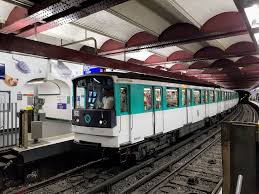Understanding the Importance of Metro Systems in Modern Cities

Introduction
Metro systems have become a vital component of urban infrastructure, providing efficient public transport solutions in densely populated cities around the globe. As urbanisation continues to rise, the significance of metro systems in reducing road congestion, enhancing accessibility, and promoting sustainable transport options has never been more apparent. This article discusses recent developments in metro systems, their impact on urban landscapes, and future trends shaping their evolution.
Recent Developments in Metro Systems
In recent months, several cities have announced ambitious plans to expand their metro networks to accommodate growing populations and to ease the burden on existing infrastructure. For instance, London’s Transport for London (TfL) recently allocated £5 billion towards expanding the London Underground and implementing new technologies aimed at improving efficiency and commuting times. Similarly, cities like Delhi and Los Angeles are rapidly developing their metro systems to offer better connectivity and reduce air pollution.
The Benefits of Metro Systems
Metro systems provide numerous benefits to urban populations. They facilitate quicker transit times, reduce dependence on personal vehicles, and lower carbon emissions, contributing to more sustainable urban environments. Studies indicate that cities with robust metro networks experience a significant decrease in traffic congestion, enhancing the overall quality of life for residents. Furthermore, metros encourage economic growth by providing better access to jobs and services.
Challenges Facing Metro Systems
Despite their advantages, metro systems face several challenges. Budget constraints and funding issues are particularly pressing, as seen in the ongoing debates regarding public transport financing in cities like New York and Paris. Additionally, the need for regular maintenance and modernisation poses ongoing operational challenges that authorities must address to keep metro systems safe and efficient.
Conclusion
The future of metro systems looks promising, but it depends heavily on addressing existing challenges while remaining adaptable to the needs of urban populations. As cities continue to grow and evolve, investing in metro infrastructure will be crucial for maintaining efficient, sustainable, and accessible urban environments. The ongoing advancements in technology and infrastructure development hint at an exciting future for metro systems, and their role in urban life will likely expand even further in the years to come.









